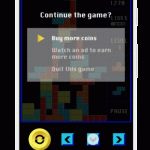Fun Was the Goal, But Learning Sneaks Up On Teen Game Developer

Harrison Yuan, the bright 12-year-old child of two professionals in San Francisco, was destined to attend the city’s private International High School. Then he found a website where he could spend hours playing the kind of online game called a “first-person-shooter.” One of the function keys on his computer now stood for a new command: R = “Reload gun.”
Does that sound like the opening of another tragic article about a schoolyard shooting? Take a breath. This is a much more common story about the 21st century, and about the kids growing up in it.
From the age of 12 to today, the now 18-year-old Yuan did spend hours on the online gaming site—called ROBLOX—and ended up teaching himself computer programming. ROBLOX was founded in 2005 for kids and teens who like to custom-design their own games. In late 2013, San Mateo, CA-based ROBLOX began allowing these young developers to sell the game accessories they’d created—such as game character outfits—on the site. Since then, Yuan has earned somewhere between $ 5,000 and $ 10,000 while keeping up his grades at International High School. He loaned some of the money to his older sister to pay her college tuition, and he’ll be heading for UCLA to study engineering in the fall.
Sure, video games can be addicting, and parents worry about the violent scenarios in many of them. But Yuan’s story shows a hopeful side to the vast number of entry points now open to kids online, where they can give full play to their imaginations and their native desire to create something original and useful. It also makes me think about the transformation of education in the Internet era—a key interest.
I had this in mind as Yuan told me how he surfed the Web during his winter break from seventh grade, and first discovered the ROBLOX site.
“I was surprised to find out that many games were created by kids my own age,” he says.
Yuan hadn’t learned any programming yet at school or from his parents—his dad is an acupuncturist, and his mother works on family services at the YMCA. But ROBLOX offered kids like Yuan free, ready-made characters programmed for certain simple actions, along with a selection of landscapes and game backdrops. Yuan chose a castle, where his new red and blue teams played a game similar to Capture the Flag.
The gaming site, however, is an invitation to tinker with the pre-made objects and their underlying code, ROBLOX chief marketing officer Rick Silvestrini says. “You change a number in the code, and look: the object turns green,” he says.
Yuan started to tinker, and then he started reading online articles about computer programming and doing experiments with his game’s characters and its rules. The combatants at the castle evolved into modern-day soldiers. Yuan’s game was now attracting players—anyone on ROBLOX can play the free user-generated games hosted there.
Why did Yuan study intricate programming techniques in his time off? It was fun, he says. He was also using ROBLOX forums to pow-wow online with young developers in far-flung places like Hong Kong and Australia.
Young people who grew up on the Internet are used to having the power to delve deeper into information sources and find answers to their own questions, Silvestrini says. “More Gen-Z folks like to dig in and figure it out for themselves, rather than sit in a lecture and wait for someone to tell them how to do it.”
Yuan’s game, Call of Robloxia 5, has now been played 40 million times, he says. A few hundred kids were playing on the afternoon when I talked to him. The game landscape now looks like a World War II battlefield, and Yuan has a game shop where he sells fellow players things like badges, outerwear, and decorations for guns—all the products of his computer programming.
Players pay for these goods in a virtual ROBLOX currency called Robux, which can be earned on the site or bought—from the iTunes store or in the form of pre-paid cards at Walmart. A dollar buys a hundred of them, Silvestrini says. Most items sold in the game shops cost 10 to 20 Robux—a dime or two—though some luxury items run $ 10 or more. When a game developer collects the equivalent of $ 250 worth of Robux, ROBLOX exchanges them for dollars sent to the developer’s PayPal account, Silvestrini says.
“We’ve had kids as young as middle school cash out,” Silvestrini says.
Top game developers on the site—mostly in their late teens or early 20’s—can reach six-figure earnings, and one is on pace to reap $ 250,000 this year, Silvestrini says. Since ROBLOX started the monetization feature called Developer Exchange in late 2013, it has paid out more than $ 1 million to game developers. Even earning a few hundred dollars a month is a boon for a teenager, he says.
“It’s better than flipping burgers or mowing lawns,” Silvestrini says. “It’s the new after-school job.”
Yuan says he hasn’t worked all-out to maximize his earnings, though the money was welcome. “I’m not fully monetizing my potential,” he says.
But I was struck by … Next Page »
(129)













